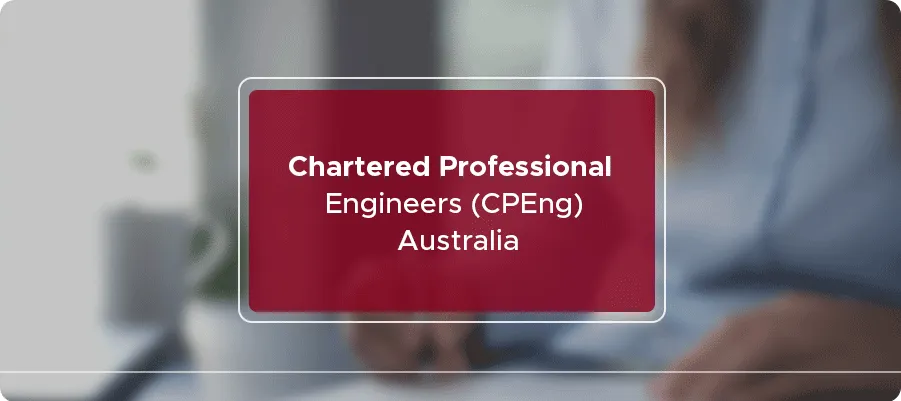
The Four Occupational Categories in engineering recognized by EA
In case you are an Engineer seeking an opportunity to have a skilled migration visa, go to Australia to grab this unparalleled opportunity. You must know about the occupational categories in Engineering recognized by EA (Engineers Australia).
EA is the main authority or official governing body of Engineers’ skilled migration to Australia and is in charge of all the procedures. Before drafting your skills assessment report, you must determine which engineering category you belong; to so that further procedure might get easier for you.
The Occupational Categories in engineering recognized by EA
Those occupational categories that Engineers Australia recognizes for engineering practice in Australia based on educational qualifications and experiences are:
- Professional Engineer
- Engineering Technologist
- Engineering Associate
- Engineering Manager

Professional Engineer:
For a professional engineer, the requirement is an academic qualification of a 4-year Australian bachelor’s degree in engineering at a University following 12 years of schooling or equivalent.
The Professional Engineer is responsible for overall systems and engineering projects. They should have leadership and management skills as they deal with clients and understand clients’ requirements, wide-ranging stakeholders, and society.
Element of Competency for Professional Engineer
1.1: Comprehensive, theory-based understanding of underpinning applicable natural and various engineering disciplines
1.2: Conceptual understanding of the information sciences and disciplines
1.3: In-depth understanding of various knowledge
1.4: Discernment of knowledge development and research directions
1.5: Knowledge of Engineering design practices
1.6: Understanding of principles, scopes of sustainable engineering practices
Professional Engineer’s occupational categories are responsible for solving or finding immediate solutions to problems and issues that arise and managing risk and sustainability issues. They have to ensure the integration of that technical and non-technical considerations. While engineering results have physical forms, the work of Professional Engineers is primarily intellectual.
Professional Engineers are mainly concerned with the development of new technologies and the improvement of technologies. Professional Engineers may involve in research and studies of engineering and in developing new principles and technologies within a broad engineering discipline. They should apply innovative and creative ideas in their profession.
Being a professional engineer, you must have the skills to:
- Concentrate on developing various new engineering practices
- Apply leadership and management skills
- Synthesis and design procedures focusing on overall systems
- Holistically pursue Engineering opportunities, taking environmental community and social issues into consideration
- Solve diverse problems by incorporating leadership and management abilities into project outcomes
The ANZSCO code of the Engineering manager is 133211.
Learn More: Who is eligible to apply CDR for Skilled Visa Migration? ✈️✈️
Engineering Technologist
For Engineering Technologists, the requirement is an academic qualification in a 3-year Australian bachelor of technology degree in engineering following 12 years of schooling or equivalent.
The ANZSCO code of Engineering technologists given by Engineers Australia is 233914.
Engineering Technologist generally gets expected to focus on interactions within the systems. As the name suggests, they are specialists in the theory and practice of a particular branch of engineering technology and precisely in its application, adaptation, or management in various contexts.
These occupational categories usually work within broadly-defined technical environments and accept multiple functions and responsibilities as they modify and adapt established engineering practices. Engineering Technologists and Professional Engineers have a vast difference between them.
Element of Competency for Engineering technologist
1.1: Systematic, theory-based understanding of underpinning natural and physical sciences
1.2: Conceptual understanding of various information sciences that underpin the technology domain
1.3: In-depth understanding of specialist bodies of knowledge within the technology domain
1.4: Discernment of knowledge development within the technology domain
1.5: Knowledge of engineering design practice and contextual factors impacting the technology domain
1.6: Understanding of the scope, principles, norms, accountabilities, and bounds of sustainable engineering practice in the technology domain
Engineering Technologists convey different wide-ranging responsibilities than Professional Engineers. But the work of Engineering Technologists needs a substantial understanding of practical situations and applications, with the intellectual challenge of keeping up-to-date on leading-edge growths as a specialist in a technology domain and how these relate to established practice.
You should have the following skills to be an Engineering technologist:
- Focuses on which method system interacts with one another
- Advance Engineering Technology
- Establish standard engineering methodologies or techniques within the technological areas
- Modify and adapt established engineering practices
Engineering Associate
For Engineering Associate, the academic qualification requirement is two years of an Australian Diploma or Associate Degree in engineering following 12 years of schooling or equivalent.
Engineering Associates should be able to focus on a specific system element. They have a wide range of functions within engineering enterprises and engineering teams. Their prominent roles include feasibility investigation, scoping, establishing criteria/performance measures, assessing and reporting technical and procedural options; quality assurance, costing, and budget management; document control and quality assurance, etc.
Element of Competency for Engineering Associate
1.1: Descriptive and formula-based understanding of various engineering fundamentals
1.2: Procedural-level understanding of different information sciences underpinning the practice area
1.3: In-depth practical knowledge and skills within sub-disciplines of practice area
1.4: Discernment of engineering developments within the practice area
1.5: Knowledge of engineering design practice and contextual factors impacting the practice areas
1.6: Understanding of the scope, principles, norms, accountabilities, and various sustainable engineering practices
Engineering Associates must be aware of occupational categories, standards, and codes of practice and become experts in their interpretation and application to various situations. They may be more familiar with comprehensive aspects of plant and equipment that can contribute to safety, cost, or effectiveness in operation than Professional engineers or Engineering Technologists.
In other cases, Engineering Associates may have high levels of expertise in design and development processes. The term ‘para- professional’ is frequently used to describe the Engineering Associate occupation in Australia.
You should have these skills as an Engineering associate:
- Work within codes and focus on specific components of the system
- Provides technical support to managers as well as team leaders
- Do research, design, assembly, construction, operation, installation, manufacture, and distribution
- Apply established practices and procedures
- Organize all resources to get used and inspect the site for maintenance
Learn More: Electrical Engineering Scope: Is it worth migrating to Australia? ✈️✈️
Engineering Manager
For an Engineering Manager, the academic requirement is a qualification in bachelor’s degree or higher in engineering or an engineering-related field following 12 years of schooling or equivalent.
The Engineering Manager also gets recognized as an additional category for migration purposes. Engineering Manager is not an engineering occupation but belongs to the Managers ANZSCO group.
The Engineering Manager reviews engineering operations and can formulate strategies, policies, and plans in the engineering field. They have a high-level executive position involving the formulation of engineering strategies, policies, and procedures and the direction, administration, and review of engineering operations for an organization.
Element of Competency for Engineering manager:
EM 1.1: Contributes to engineering business strategies
EM 1.2: Develops client relationship
EM 1.3: Manages the implementation of engineering plans within the business
EM 1.4: Manages resources
EM 1.5: Manages people
EM 1.6: Manage suppliers
EM 1.7: Manages business information
EM 1.8: Monitors engineering business performance
You should have the following skills to work as an Engineering manager:
- Direct the administration and review of engineering operations for an organization
- Concentrate on certain system components
- Establishes different practices and procedures enforcing codes
- Determination of the number of resources to get employed and evaluation of the location for upkeep
- Formulate, implement, and monitor engineering strategies, policies, and plans
Criteria for Engineering Manager
- Engineering experience minimum of five years
- Experiences of at least two years as an Engineering Manager in a favorable environment
- People belonging to managerial positions who report to them
The Engineering Manager contributes to the research and development of engineering projects. They are responsible for determining, implementing, and monitoring engineering strategies, policies, and plans and also provide advice on engineering methods.
They also observe the performance and ensure engineering standards’ quality, cost, safety, and timeliness. They are in charge of the selection, training, and development of personnel working with others and play an essential role in planning, organizing, directing, controlling, and coordinating the engineering and technical operations of the organization.
Learn More: Easy Pathway to Australia Permanent Residency for Engineers ✈️✈️
Wrapping up
If you got any queries related to occupational categories and other procedures for CDR writing, contact us and get help from a professional consultant. We provide free consultation services to our customers. CDRreportwriters.com is a consultant registered in Australia, and we provide RPL report writing, tutoring, and reviewing services.





